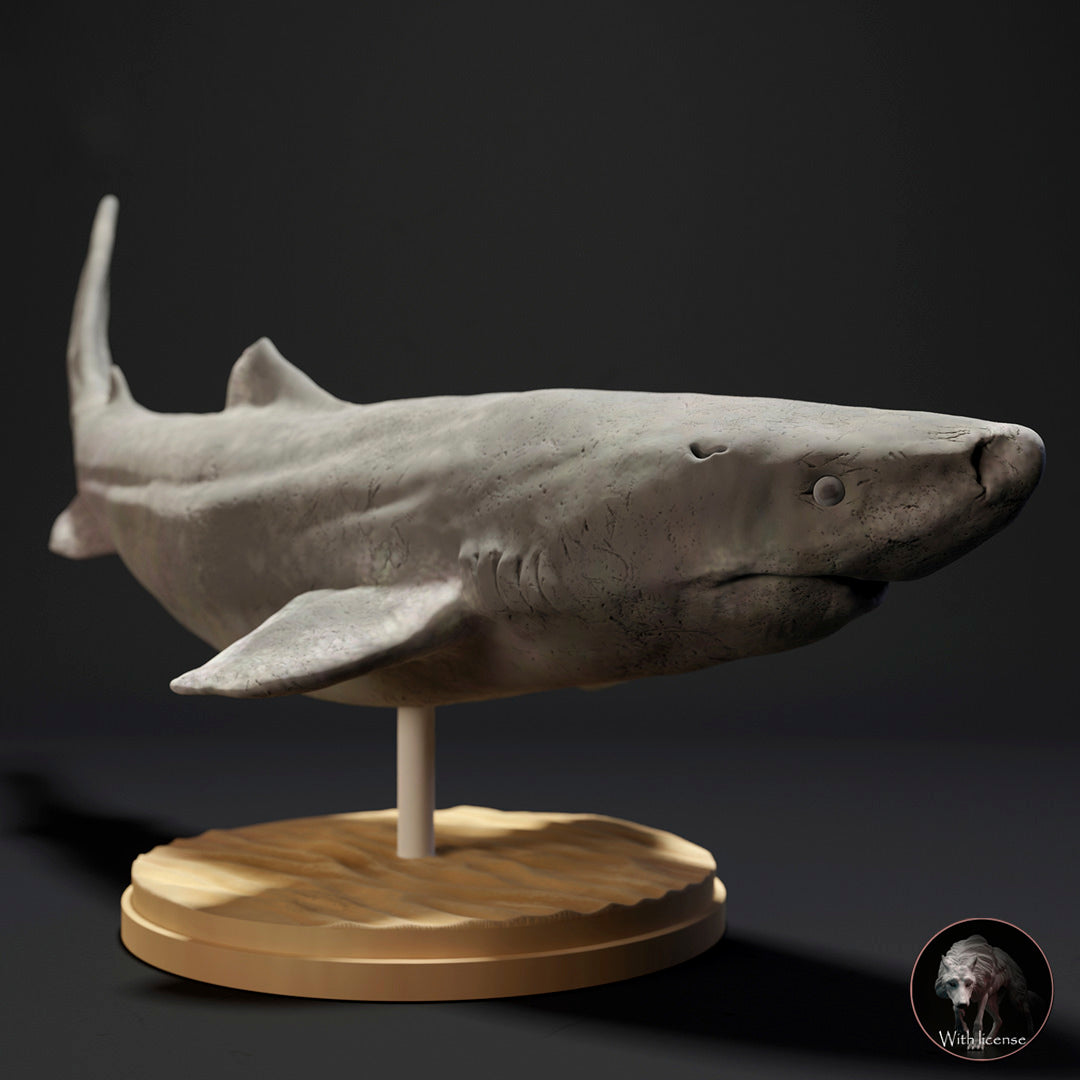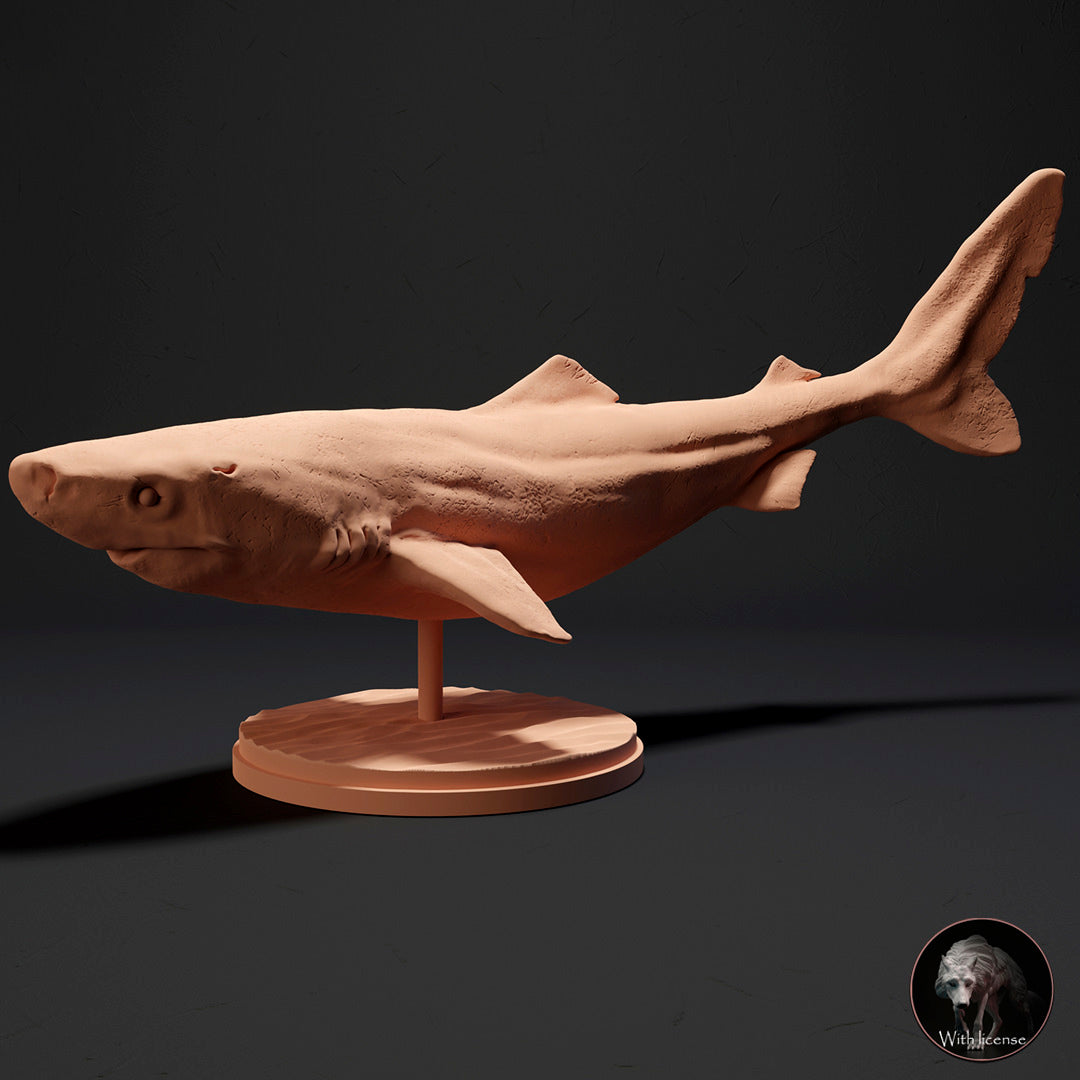


Greenland shark
Do you want another scale?
Contact us and we will make it possible!
How will you receive your replica?
In the unprimed and primed variants, you will receive the complete replicas except for the large models, where you will receive an assembly kit.
In the hand-painted variant, the replicas will be delivered complete.
How does the painting service work?
We created a private chat for you where you will have direct communication with our painter , being able to choose your preferred color schemes and follow the hand painting process closely.
Pairs well with

Greenland shark
If you have any questions, you are always welcome to contact us. We'll get back to you as soon as possible, within 24 hours on weekdays.
Shipping Information
Visit our shipping policy page to find all the information.
Customer Support
Give us a few details and we’ll offer the best solution. Connect by chat or email.
We are available 24/7.
FAQ’s
Visit our FAQ's page to find answers to common questions.
Contact Us
We'd love to hear from you. We are here to help. Visit our contact page to send us a message.
Product details
The Greenland shark (Somniosus microcephalus), also known as the boreal shark or arctic shark, is a large shark species that inhabits the cold waters of the Arctic Ocean and the North Atlantic. It is one of the largest sharks in the world and is known for its longevity and adaptations to the extremely cold environment in which it lives.
Here is an overview of the Greenland shark:
Size: Greenland sharks are huge, with an average length ranging from 4 to 6 meters, although some individuals have been reported with lengths of up to 7 meters or more.
Shape and appearance: Its body is elongated and cylindrical, with a large, flattened head. The mouth is wide and equipped with large, sharp teeth, which allow it to feed on large prey.
Color: Its general coloration is gray or dark brown on the upper part of the body and lighter on the belly. This coloration helps them camouflage themselves in the dark waters of the Arctic.
Cold Adaptations: The Greenland shark is well adapted to living in cold water, and its body is provided with a thick layer of fat, known as a "blubber," which helps it maintain its body temperature and buoyancy in the water.
Longevity: One of the most surprising characteristics of this species is its longevity. They are believed to be able to live for several centuries, making them one of the longest-lived vertebrates on Earth. This has been determined through analysis of growth bands present on their vertebrae, similar to growth rings on trees.
Food: They are top predators in their ecosystem, and feed mainly on fish, seals, squid and other smaller sharks.
Although the Greenland shark is not aggressive towards humans and is rarely found in areas where there are bathers or recreational activities, it is important to note that it is a protected species due to its low reproductive rate and vulnerability to overfishing. Their slow growth rate and limited reproduction make them particularly susceptible to human activities, so protecting and conserving their habitat is essential to ensure the survival of this fascinating species.
Approximate measurements of the Shark:
Scale 1:32 - 145mm
Information about aftershocks
Collector's item ; Hyper-realistic replica, highly detailed and with a high degree of scientific precision.
Made to scale, prototyped in resin and with a scenic base in most of the models offered. If you like miniatures, both for collecting and for painting, we offer you a wide variety of scale replicas; All of them related to dinosaurs, extinct prehistoric fauna and current fauna.
So if you love dinosaurs and animals as much as we do, this is your favorite store to collect and paint them :)
We are authorized distributors of all the replicas and figures we offer. We use 3D printers with 8K - 14K resolution, and high-quality resins with additives to improve hardness and flexibility, thus offering replicas of impeccable quality.
Different scales will be used to make the replicas (depending on the size of the species), although we are open to making other suggested scales upon request as long as they fit in our printing trays, for which you will have to contact us via email and request the required size.
Replicas are supplied with the option of airbrush priming in dark grey. If you require another colour, please let us know which one you prefer in the box with special instructions for the seller. Without priming, we do not guarantee that the resin will accept paint.
We also offer the option of choosing a professionally painted replica, which is agreed upon throughout its development with the painter, through a private chat available.
Complete replica (one piece): We supply complete replicas in those models that are small, and models that are medium, large or not very bulky, will have the prerogative of being presented as a complete replica or assembly kit as the case may be.
Complete replicas will be supplied separately from their base.
Replica assembly kit: We supply replicas whose models are large, very large or bulky, only with this option.
The indicated replicas (generally composed of base, head, body and tail) will come prepared for the subsequent assembly that will be required by the client, by sanding, putty, adhesive or technique chosen by the client.
All replicas are thoroughly inspected before shipping and will be carefully packaged to prevent damage during transport.
Information about the models
The poses of the models aim to represent each character in the most scientifically viable way, thus revealing the life and customs of prehistoric and modern fauna.
Each character has its own personality and develops in different life scenarios; birth, adolescence and play, hunting, feeding, fighting, courtship, death and many other scenes from their daily life, always from the creative perspective of their designers.
Handmade
All orders are individually prepared on the cutter for subsequent prototyping, obtaining a resin part that will require post-processing by manual and ultrasonic cleaning, support removal, ultraviolet curing, labeling and packaging.

We are authorized distributors
We offer both our own physical replicas and those that have been modeled by many of the best 3D designers, in order to offer you the greatest possible variety.
Frequently Asked Questions
If you have any questions about products, orders or shipping, please read our FAQ page to learn more.

